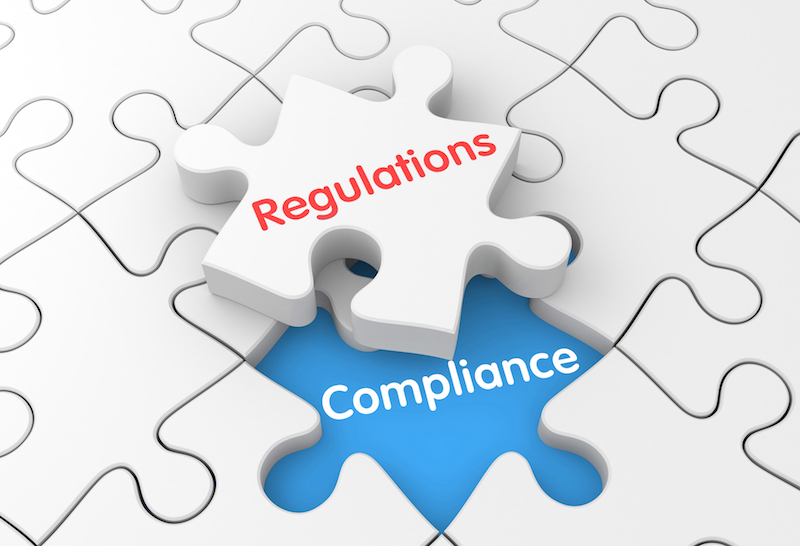The deadline for defense contractors and subcontractors to implement the information security requirements listed in the National Institute of Standards and Technology (NIST) Special Publication (SP) 800-171 has come and gone. There are more than 100 information security requirements in NIST 800-171, and it is a good bet that many smaller companies without ample IT resources fall into the category of: “We missed the deadline… what now?”
By Izak Bovee FCW
If you want to continue working with the Department of Defense, the simple answer is you will have to be 800-171 compliant. This includes secure file sharing and information exchange governance, namely how you store, access, exchange and govern sensitive (but unclassified) information with the agency. And while the December 31, 2017, deadline was directed at DOD’s industry partners, NIST 800-171 applies to all non-federal organizations that work with U.S. government systems and data. So the suggestions below are in no way limited to defense contractors!
Achieving compliance with NIST 800-171 first requires an understanding of technical terms like “controlled information,” “information systems” and how they apply to information exchange and information exchange governance.
For starters, NIST 800-171 categorizes sensitive information, what it calls “controlled information,” into two groups: technical and unclassified. Controlled technical information (CTI) relates to military or space applications. Controlled unclassified information (CUI) is more common and includes personally identifiable information, patents, financial data, court records and any other type of information that must be kept private but doesn’t require a high-level security clearance to view. We’ll focus on CUI, as it’s broader in scope and applicable to most government contractors and their secure file sharing practices.
Per the NIST 800-171 requirements, contractors must use a covered information system, which it defines as “an unclassified information system that is owned, or operated by or for, a contractor and that processes, stores or transmits covered defense information.” These systems include email; FTP; enterprise content management platforms; on-prem and cloud-based storage systems; file sharing and collaboration platforms; and employee endpoints such as laptops, tablets and smartphones.
Within these parameters, companies contracting with DOD must adhere to rigorous secure file sharing and information exchange governance policies to safely transmit sensitive information that “support the delivery of essential products and services to federal agencies (e.g., providing credit card and other financial services; providing Web and electronic mail services; conducting background investigations for security clearances; processing healthcare data; providing cloud services; and developing communications, satellite, and weapons systems).”
Implementing effective secure file sharing practices and information exchange governance policies that comply with NIST 800-171 requires contractors to walk a fine line between security and productivity. The crux of the challenge lies in the fact that contractors need to access and share information on an ever-increasing number of devices and apps, however hindering their access for security reasons makes it harder for them to work efficiently and remain productive.
Here are seven steps a contractor or subcontractor can take to strike that balance and achieve NIST 800-171 compliance with respect to information exchange governance:
1. Locate: Identify the systems in your network that hold CUI. This includes: local storage like CIFS files and SharePoint, cloud storage like OneDrive for Business and Box, endpoints, and even portable hard drives.
2. Categorize: Classify specific files that fall under the definitions of CUI and separate them from information that does not qualify. This will help streamline the process of demonstrating NIST 800-171 compliance in the event of an audit.
3. Limit: Implement access controls so only authorized employees can view, download and share files containing CUI. Similarly, set expiration dates to files or folders containing CUI to prevent access after a project has been completed.
4. Encrypt: Encrypt all data, whether in transit or at rest. Doing so adds an extra layer of security and control over your data, the systems holding your data, and finally the systems transmitting your data. Encrypted data both enables compliance and doesn’t hinder authorized users’ ability to share files through familiar systems like email, FTP, and more secure file sharing services.
5. Monitor: Know who is accessing CUI and how they’re using it. NIST 800-171 requires contractors to ensure that the actions of individual users can be uniquely traced so they can be held accountable for their actions, whether malicious or not. Strong information exchange governance should be able to not only track activity like who sent what file to whom and when but also be able to identify any anomalies.
6. Train: Educate employees on the fundamentals of information exchange governance and best practices, and do so at regular intervals, not just during the onboarding process. Ensure that all employees are aware of the security risks associated with their day-to-day activities involving CUI. Also, be sure they know what decisions they make that could jeopardize CUI. For example, they should know how to identify external threats like suspicious emails and insider threats which could include a malicious actor downloading CUI onto a thumb drive or an employee who uses unsanctioned technology (shadow IT) for expediency.
7. Assess: Conduct a security assessment that examines all systems, environments and information exchange procedures to assess risk.
DOD’s deadline to comply with NIST 800-171 has passed. It is up to each contracting organization therefore to take immediate action if they are not in compliance. Failure to do so can result in what could be the termination of an extremely lucrative contract with DOD, the filing of criminal fraud charges and/or a breach of contract lawsuit. The good news is, that by following these seven steps to improve information exchange governance, an organization is well on its way to demonstrating compliance.





